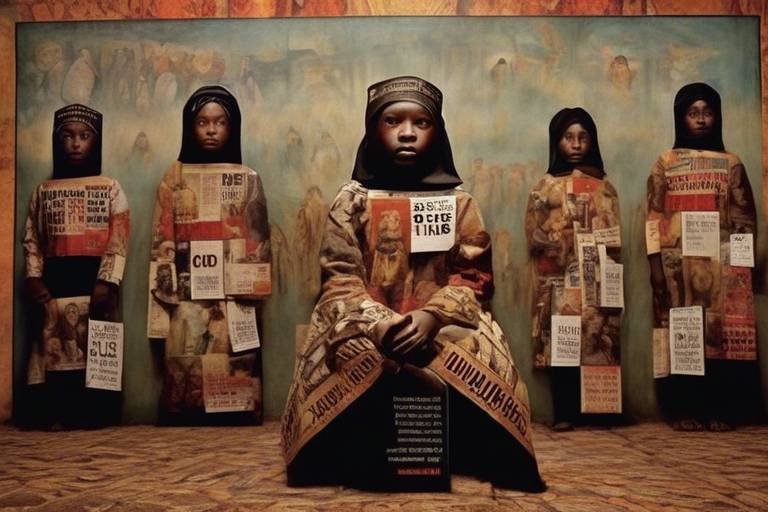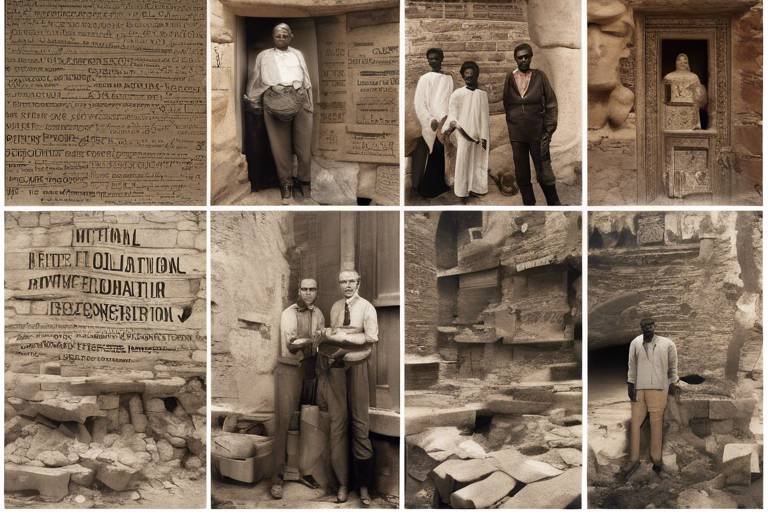The Role of International Treaties in Protecting Cultural Heritage
International treaties play a crucial role in protecting and preserving cultural heritage around the world. These agreements serve as a cornerstone for cooperation among nations to safeguard our shared cultural legacy for future generations. By establishing guidelines, regulations, and obligations, international treaties aim to prevent the destruction, looting, and illicit trafficking of cultural artifacts and sites of historical significance.
Through the ratification and implementation of international treaties, countries commit to upholding the principles of cultural heritage conservation and promoting respect for diverse cultural expressions. These agreements provide a framework for collaboration, exchange of knowledge, and mutual assistance in times of crisis, such as armed conflicts or natural disasters, where cultural heritage is at risk of being damaged or lost.
Furthermore, international treaties help raise awareness about the importance of cultural heritage preservation and the need for collective action to protect irreplaceable monuments, archaeological sites, traditional practices, and intangible cultural expressions. By uniting nations under a common goal, these treaties foster a sense of global responsibility towards safeguarding our cultural heritage for the benefit of present and future generations.

UNESCO World Heritage Convention
The UNESCO World Heritage Convention plays a pivotal role in identifying and safeguarding cultural and natural heritage sites of exceptional universal value. Envisioned as a collaborative effort among nations, this convention aims to protect these sites for future generations to appreciate and cherish. By recognizing the outstanding significance of these locations, the convention emphasizes the need for international cooperation in preserving our shared cultural legacy.
Established in 1972, the UNESCO World Heritage Convention has been instrumental in promoting the conservation of diverse cultural and natural wonders around the globe. Through a rigorous selection process, sites deemed to possess exceptional value are inscribed on the World Heritage List, garnering global recognition and support for their protection. This recognition not only raises awareness about the importance of these sites but also mobilizes resources for their preservation.
Moreover, the convention serves as a platform for fostering dialogue and exchange among countries to enhance the management and conservation of World Heritage sites. By encouraging collaboration in research, capacity-building, and sustainable development practices, the convention strives to ensure the long-term safeguarding of these irreplaceable treasures.
One of the key principles of the UNESCO World Heritage Convention is the notion of 'outstanding universal value,' which underscores the exceptional significance of designated sites to all of humanity. This criterion guides the selection process and underscores the need for a collective commitment to protect and preserve these unique places for the benefit of present and future generations.

Hague Convention for the Protection of Cultural Property
The Hague Convention for the Protection of Cultural Property, established in 1954, stands as a pivotal international agreement aimed at safeguarding cultural treasures during times of armed conflict. This convention signifies a crucial step towards recognizing the importance of preserving cultural heritage amidst the chaos and destruction of war. By outlining specific guidelines and obligations for state parties, the Hague Convention seeks to mitigate the devastating impact of armed conflicts on cultural property worldwide.
One of the key provisions of the Hague Convention is the establishment of the Blue Shield, a symbol representing the protection of cultural heritage during armed conflicts. This emblem serves as a beacon of hope, signaling the commitment of nations to uphold the principles of cultural preservation even in the midst of turmoil and destruction. Through the Blue Shield initiative, efforts are made to identify, mark, and safeguard cultural sites and artifacts that are particularly vulnerable to the ravages of war.
Moreover, the Hague Convention emphasizes the responsibility of state parties to respect and protect cultural property within their control, ensuring that these irreplaceable assets are shielded from intentional destruction or looting. By recognizing the universal value of cultural heritage, the convention aims to foster a sense of shared humanity and collective responsibility towards preserving the diverse cultural legacies that enrich our world.

Convention on the Means of Prohibiting and Preventing the Illicit Import, Export, and Transfer of Ownership of Cultural Property
Exploring the significance of international treaties in safeguarding cultural heritage sites and artifacts worldwide, highlighting the key conventions and agreements that aim to preserve and protect our shared cultural legacy.
The Convention on the Means of Prohibiting and Preventing the Illicit Import, Export, and Transfer of Ownership of Cultural Property plays a crucial role in combating the illicit trafficking of cultural artifacts. This international agreement focuses on preventing the illegal trade of cultural property, aiming to safeguard the cultural heritage of nations around the world.
The convention establishes mechanisms for identifying and recovering stolen cultural artifacts, as well as facilitating the return of such items to their countries of origin. By imposing strict regulations on the import, export, and transfer of cultural property, the convention aims to curb the illicit trade that threatens the integrity and authenticity of cultural heritage.
Through international cooperation and coordination, state parties to the convention work together to enforce measures that deter the illicit trafficking of cultural property. By promoting transparency in the art market and enhancing collaboration between countries, the convention contributes to the protection and preservation of cultural treasures for future generations.

United Nations Declaration on the Rights of Indigenous Peoples
The United Nations Declaration on the Rights of Indigenous Peoples is a pivotal document that recognizes and upholds the rights of indigenous communities worldwide. Enshrined in this declaration are provisions that emphasize the importance of protecting and preserving indigenous cultural heritage, acknowledging the unique relationship indigenous peoples have with their lands, resources, and traditions.
One of the key aspects of the declaration is the affirmation of indigenous peoples' right to maintain, control, protect, and develop their cultural heritage, including the right to practice and revitalize their cultural traditions and customs. This recognition is essential in ensuring the continuity of indigenous knowledge systems, languages, rituals, and artistic expressions that form the foundation of their cultural identity.
Moreover, the declaration highlights the significance of indigenous peoples' participation in decision-making processes that affect their cultural heritage, emphasizing the need for meaningful consultation and cooperation between states and indigenous communities. By involving indigenous voices in heritage preservation efforts, the declaration aims to foster mutual respect, understanding, and collaboration in safeguarding indigenous cultural practices and sites.
Furthermore, the declaration underscores the rights of indigenous peoples to access and control their traditional lands and territories, acknowledging the intrinsic link between cultural heritage and the environment. This recognition is crucial in addressing the challenges faced by indigenous communities in protecting sacred sites, landscapes, and natural resources that hold cultural significance and spiritual value.
In essence, the United Nations Declaration on the Rights of Indigenous Peoples serves as a beacon of hope for indigenous communities striving to preserve their cultural heritage in the face of modernization, globalization, and external threats. By affirming the rights of indigenous peoples to safeguard their traditions, languages, and ancestral practices, the declaration paves the way for a more inclusive and equitable approach to cultural heritage protection on a global scale.

Convention on the Protection and Promotion of the Diversity of Cultural Expressions
The plays a crucial role in safeguarding cultural diversity and promoting various cultural expressions on a global scale. This convention aims to protect the richness of different cultures and ensure that they thrive in today's interconnected world. By recognizing the importance of cultural diversity, the convention seeks to support and preserve the unique identities of communities around the world.
One of the key aspects of this convention is its provisions for protecting and supporting cultural industries. By fostering the growth of cultural sectors such as arts, music, literature, and crafts, the convention contributes to the economic and social development of societies. It emphasizes the significance of cultural expressions in shaping identities and fostering dialogue between different cultures.
Furthermore, the convention highlights the need to respect the rights of artists and creators, ensuring that they have the freedom to produce and distribute their work while receiving fair compensation. This aspect promotes creativity and innovation within cultural industries, leading to a vibrant and diverse cultural landscape globally.
Moreover, the convention addresses the challenges faced by cultural expressions in the digital age, emphasizing the importance of adapting to new technologies while preserving traditional forms of cultural heritage. By promoting access to cultural content and encouraging cultural exchange, the convention fosters mutual understanding and respect among nations.
In conclusion, the serves as a significant instrument in safeguarding cultural diversity and promoting cultural expressions worldwide. By recognizing the value of cultural heritage and supporting creative industries, the convention contributes to the enrichment of global cultural dialogue and the preservation of our shared human heritage.

Convention Concerning the Protection of the World Cultural and Natural Heritage
The Convention Concerning the Protection of the World Cultural and Natural Heritage plays a crucial role in safeguarding sites of outstanding universal value. This convention establishes a framework for the identification and preservation of cultural and natural heritage sites that hold exceptional significance for humanity. It sets forth criteria for the inscription of sites on the prestigious World Heritage List, ensuring their protection for future generations.
State parties to this convention commit to the preservation of the cultural and natural heritage within their territories, recognizing the importance of these sites as irreplaceable treasures of humanity. By implementing conservation measures and management plans, countries aim to safeguard these exceptional locations from threats such as urbanization, pollution, and natural disasters.
The Convention Concerning the Protection of the World Cultural and Natural Heritage underscores the collective responsibility of the international community in preserving our shared heritage. Through cooperation and mutual assistance, countries work together to ensure the longevity and integrity of these unique sites, fostering a sense of global stewardship for cultural and natural treasures.

Convention for the Safeguarding of the Intangible Cultural Heritage
The focuses on the preservation of intangible cultural practices and expressions that are essential to communities worldwide. Unlike tangible heritage, which includes physical artifacts and sites, intangible cultural heritage encompasses traditions, rituals, music, dance, language, and other forms of cultural expression that shape the identity of a community.
This convention recognizes the importance of safeguarding intangible heritage as a means of ensuring cultural diversity and promoting intercultural dialogue. It emphasizes the role of communities in identifying, documenting, and transmitting their intangible cultural practices to future generations, acknowledging that these living traditions are constantly evolving and need active protection.
One of the key aspects of the Convention for the Safeguarding of the Intangible Cultural Heritage is the concept of community involvement. It highlights the significance of the active participation of communities, groups, and individuals in the safeguarding of their intangible heritage, fostering a sense of ownership and pride in their cultural traditions.
The convention also aims to raise awareness about the importance of intangible cultural heritage and its role in promoting social cohesion, sustainable development, and creativity. By safeguarding these living expressions of culture, the convention contributes to the resilience of communities and the preservation of their unique identities in an increasingly globalized world.
Furthermore, the Convention for the Safeguarding of the Intangible Cultural Heritage encourages international cooperation in the protection of intangible heritage, fostering dialogue and exchange of best practices among countries. This collaboration helps strengthen the capacity of states to safeguard and promote their diverse cultural expressions, ensuring that intangible heritage remains a vibrant and integral part of our shared human experience.

Convention on the Protection of Underwater Cultural Heritage
The plays a crucial role in safeguarding the submerged cultural treasures that lie beneath the world's oceans, lakes, and rivers. This convention addresses the unique challenges associated with preserving underwater cultural heritage, including ancient shipwrecks, archaeological sites, and sunken cities that hold invaluable historical and archaeological significance.
One of the key provisions of this convention is the establishment of guidelines for the protection and management of underwater cultural heritage sites. These guidelines help ensure that these sites are preserved in situ whenever possible, allowing future generations to explore and learn from these underwater treasures.
Moreover, the convention emphasizes the importance of international cooperation in the protection of underwater cultural heritage. Given the transboundary nature of many underwater sites, collaboration among nations is essential to effectively safeguard these submerged relics and prevent looting or destruction.
By promoting research, education, and awareness about underwater cultural heritage, this convention seeks to foster a deeper appreciation for the maritime history and archaeological wonders that lie beneath the waters. Through responsible exploration and conservation efforts, the Convention on the Protection of Underwater Cultural Heritage aims to ensure that these submerged cultural assets are protected for the benefit of humanity.
Frequently Asked Questions
- What is the purpose of international treaties in protecting cultural heritage?
International treaties play a crucial role in safeguarding cultural heritage by establishing legal frameworks and guidelines for the preservation and protection of cultural sites and artifacts. These treaties promote international cooperation and coordination to ensure the conservation of our shared cultural legacy for future generations.
- How does the UNESCO World Heritage Convention contribute to cultural heritage preservation?
The UNESCO World Heritage Convention identifies and protects cultural and natural heritage sites of outstanding universal value, encouraging countries to work together to preserve these sites. By inscribing sites on the World Heritage List, the convention raises awareness about the importance of heritage conservation and promotes responsible stewardship of these iconic landmarks.
- What is the significance of the Hague Convention for the Protection of Cultural Property?
The Hague Convention aims to safeguard cultural property during armed conflicts by establishing rules to prevent the destruction and looting of cultural heritage. It emphasizes the need for respect and protection of cultural sites, museums, and artifacts even in times of war, highlighting the importance of preserving our diverse cultural identities amidst global challenges.
- How does the Convention on the Protection of Underwater Cultural Heritage address preservation challenges?
The Convention on the Protection of Underwater Cultural Heritage addresses the unique challenges of preserving submerged archaeological sites and wrecks. It emphasizes the importance of international cooperation in safeguarding these underwater treasures, promoting responsible exploration and conservation practices to protect our maritime cultural heritage.



















